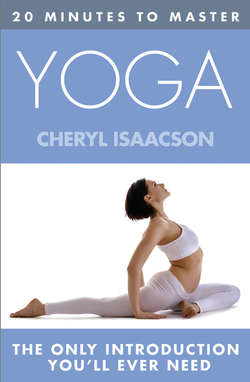Читать книгу 20 MINUTES TO MASTER ... YOGA - Cheryl Isaacson - Страница 12
ОглавлениеCHAPTER 4
FINDING A TEACHER AND CLASS
THE MANY PATHS OF YOGA
The yoga we mostly practise today is Hatha, the yoga of physical posture. But just as there are all sorts of personalities and a whole variety of lifestyles, so there are different yogic paths to suit these. If you want to you can find teachers of yogas which emphasize the use of sound and chanting, of love and devotion, of the mind rather than the body. There is not space in this book to cover all these paths, but if you find that you are particularly attracted to one of these then follow up the contacts in the Resource Guide. Whatever system you follow, you will gain a sense of the wholeness of yoga.
THE DIFFERENT SCHOOLS OF YOGA
Today you are likely to hear yoga systems referred to by the teachers who originated them, or to the specific practices associated with them. These schools have taken elements from the classical tradition and emphasized particular aspects. The most popular types include:
Iyengar Yoga. BKS Iyengar developed this system, combining physical (Hatha) and mental (Raja) yoga, which he believes are interdependent. Iyengar yoga teaches intense precision in posture and breathing and requires discipline so you learn balance and control. Once mastered, it offers a complete means of tuning body, mind and spirit.
Sivananda Yoga. This system was devised by Swami Vishnu Devananda from the teachings of his master, Swami Sivananda. It includes a balanced system of breathing practices and postures, and emphasizes diet and positive thinking.
Astanga Yoga. Often called ‘power yoga’, this is suitable for the very fit, who want their yoga to act as a strong physical work-out. The postures are performed fast and continuously, with each movement accompanied by a breath.
Vinyasa Yoga. Vinyasa is a form of Hatha yoga in which breath is co-ordinated with each movement. The postures are strung together in sequences, also known as ‘yoga-flow’. It is less physically demanding than Astanga yoga, which is also a Vinyasa form.
THE YOGA CLASS – WHAT TO EXPECT
You will probably find your first class termed ‘Hatha yoga’ if it is not one of the specialist forms referred to above. Whatever type it is, yoga should be done with the help of a properly trained teacher, at least initially. Don’t be tempted to try to do too much too soon. Your class will consist of the well-known body postures, practised in a sequence which will differ according to your teacher. Generally, standing postures are performed first, then sitting postures, backbends, twists and inversions, with relaxation at the end.
Breathing practices (called pranayama in Sanskrit) may also be a feature in your class. They help to cleanse your body, and much more besides. Breath is said to contain essential life force and how we take it in and use it is crucial.
THE CHAKRAS
Your yoga teacher may talk about the chakras, and how the different postures can work on the different chakras, or energy points. The seven chakras are part of yoga philosophy; they are believed to be little vortices of energy, each with a different function:
The root chakra is located at the perineum. It governs the lower limbs and the sense of smell, as well as the emotion of fear and the sense of security. It is associated with the colour red.
The base chakra is located at the genitals. It governs sexuality and physical energy, the hands and the sense of taste. It is associated with the colour orange.
The navel or solar plexus chakra is located at the base of the sternum. It governs vision, power and expansiveness. It is associated with the colour yellow.
The heart chakra is located at the heart. It governs the sense of touch, compassion and love. It is associated with the colours green or rose pink.
The throat chakra is located at the throat. It controls the mouth and skin, the auditory sense and communication. It is connected to positive and negative attitudes to life. It is associated with the colour blue.
The ‘third eye’ chakra is located slightly above and between the eyebrows. It governs our mental sense as well as our ability to trust. It is also the seat of wisdom and the connecting point between ourselves and the universal consciousness. It is associated with the colour indigo.
The crown chakra is located at the top of the head. It is said to be all-transcending. From here we have the ability to connect with a higher consciousness. It is associated with the colours gold, violet or white.
Working with the chakras is a potent way of ensuring body, mind and soul are always in harmony.
